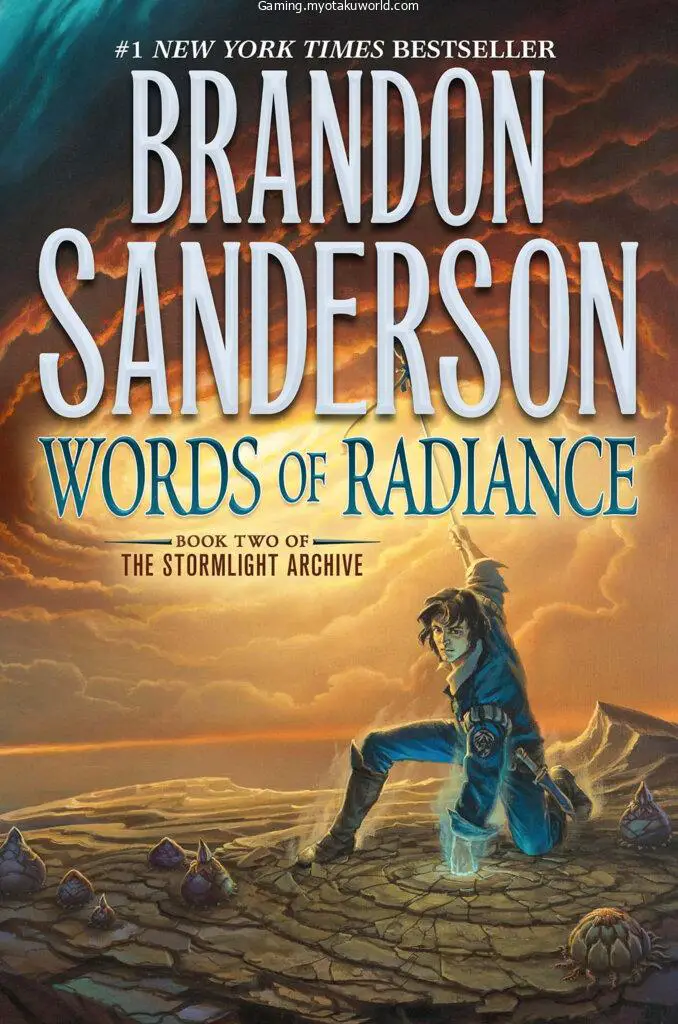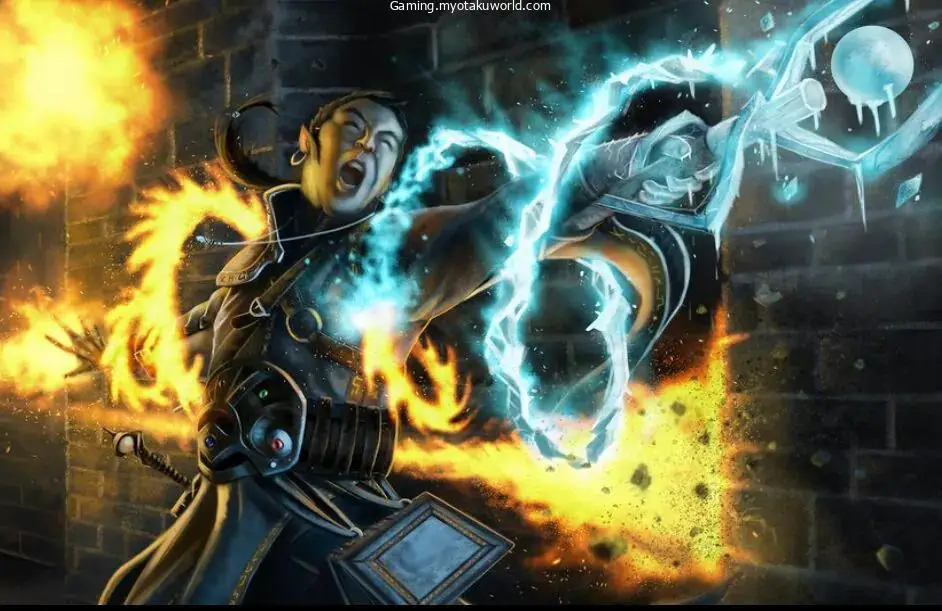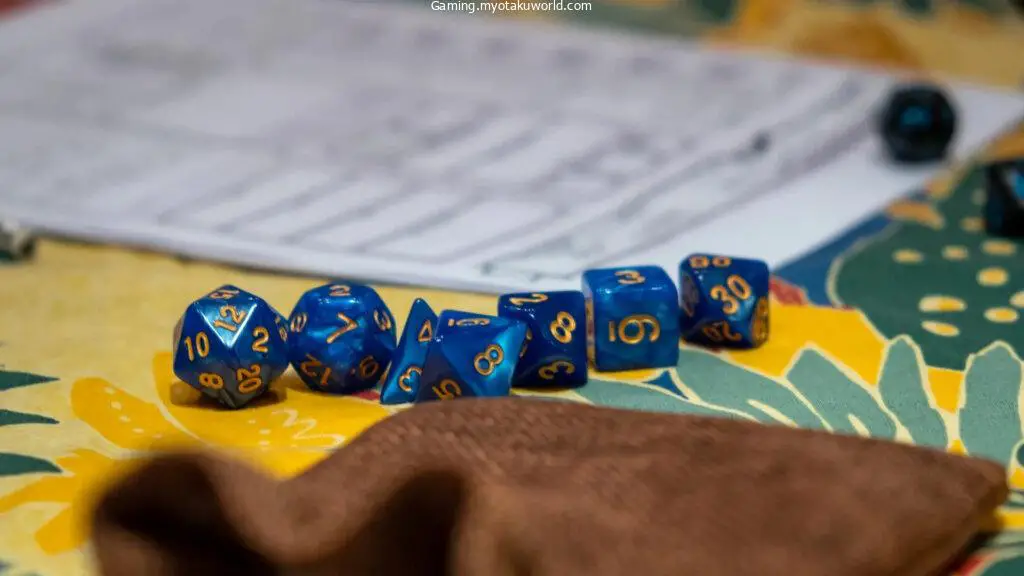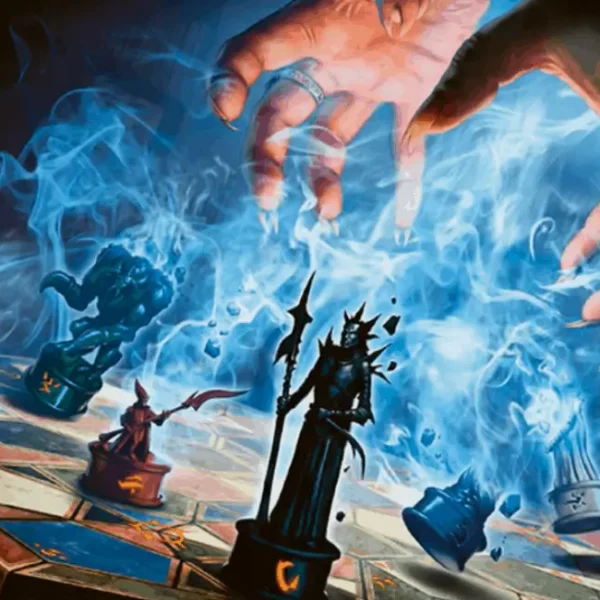In Dungeons and Dragons, there are a lot of spells that don’t seem useful at first glance. When you’re a min-maxer, you want to start out with the strongest spells.
Why take a 1d6 cantrip when there is a 1d8 cantrip?
There are, of course, other things to think about when looking at the spells and how they might be useful in different situations.
One of these spells is the one called “Word of Radiance.”
When put next to a spell like “Sacred Flame,” it doesn’t seem all that impressive at first glance. But in some situations, the spell we’re going to talk about in this Word of Radiance 5e guide could save your butt.
It lets you be close to your enemies without being at a disadvantage or giving them an advantage on their Constitution saving throw.
Word of Radiance can do a lot of damage, and if the rules are changed just a little bit to let Paladins use it, it can do even more. All you have to do as a player is figure out how to use the rules to your advantage.
Even if this spell is only for Clerics, Word of Radiance helps Clerics break away from the idea that they are just heal bots and grow into full-fledged fighters.
Even though Word of Radiance isn’t the most useful spell in Dungeons & Dragons 5e, it is one of the best Cantrips to use if you want to cheat the game.
Up Front
The Word of Radiance is an Evocation Cantrip. It can be found in Xanthar’s Guide to Everything. It has an immediate effect on the five feet around you, and all you need to say is your Word of Radiance.
Within five feet of you, every creature must make a Constitution save against your Spell Save DC.
If they fail, they take 1d6 damage from Radiance. When you reach levels 5, 11, and 17, this spell’s damage goes up by 1d6. If a creature’s Con save is successful, it doesn’t take any damage.
This spell is only for Clerics to use.
What is Word of Radiance?

Word of Radiance is a Cantrip, which means you can use it right from the start of your campaign. This spell is in Xanthar’s Guide to Everything, so you might want to make sure your Dungeon Master is used to using spells from Player’s Handbook expansions.
Before you use this Cantrip, talk to your DM about whether or not your table uses expansions like Xanthar’s Guide to Everything.
Once your DM gives you the go-ahead, don’t think twice about using this spell to destroy all enemies within a five-foot radius of you.
For this spell to work, you need to say your divine word aloud and focus on your Holy Symbol. Once you say your holy word,
In a five-foot range, you erupt with a burning light. Every creature in that range that you choose must pass a Constitution saving throw or take 1d6 radiant damage. If their Con save works, they don’t take any damage.
When you reach a certain level, the damage of this Cantrip goes up by 1d6. At level five, Word or Radiance will do 2d6 damage.
Damage goes up to 3d6 at level 11. At level 17, the damage goes up to 4d6, which means you can do up to 24 points of damage without ever using a spell slot.
Word of Radiance is a cantrip, so this spell can be used right from the start. You can use Word of Radiance as soon as you make your character and choose your spells.
What is Xanthar’s Guide to Everything?
If you don’t know about Dungeons and Dragons 5e expansions, Xanthar’s Guide to Everything is one of these. Xanthar’s Guide to Everything is an expansion of the rules for Dungeons and Dragons 5e.
It was written by the Wizards RPG Team. It came out for the first time in November 2017, and it has a lot of new subclasses, spells, racial feats, and backstories.
The Xanthar’s Guide to Everything also showed Dungeon Masters how to use traps, magic items, and downtime activities in a different way. On the standard cover of Xanthar’s Guide to Everything, you can see the Beholder, Xanathar, and his beloved pet fish, who has no name.
This rules expansion doesn’t change the core of the game, and it doesn’t change how Dungeons & Dragons 5e is played.
Instead, it adds more official content, letting people who aren’t comfortable making their own games or don’t know how to balance them make their games bigger than what’s in the Player’s Handbook.
But that doesn’t mean that these rule expansions are perfect in every way, and there are often ways that they can be made better or added to.
Books like the Player’s Handbook, Xanthar’s Guide to Everything, and Tasha’s Cauldron of Everything should be used as guides instead of rules.
What is the School of Evocation?

In Dungeons and Dragons 5e, the School of Evocation is one of the many schools of magic. This school of magic lets you do powerful things with the elements.
Since there isn’t a school that specialises in divine magic, the School of Evocation is the best place for the Word of Radiance cantrip.
Even though Divine Spellcasters and Divine magic are real things in the Dungeons and Dragons world, they don’t fit well into any particular school of magic.
When you think about how most divine magic comes from a god, this makes sense. When their powers go beyond what mortals can do, it wouldn’t make much sense for a school of magic to contain even a general idea of everything they can do.
Instead, deities give their most devoted followers their own magic, which lets them draw from all schools of magic without focusing on one or the other – at least until you get to the subclasses for divine spellcasters.
Who Can Use Word of Radiance?
If you follow the rules, this spell is only for Clerics, which is bad news for all the magic users out there, especially Paladins. If not, there’s no reason I can think of why a Paladin couldn’t use Word of Radiance.
After all, both classes use divine magic to their advantage, and there are literally zero reasons why a Paladin shouldn’t have access to this spell.
But if you like to follow the rules and use the spell exactly as written, whether to keep things in order or because you’re not a big fan of homebrew, there are ways to get around this strict class-based restriction.
In order to get around the rules without homebrewing anything, as a player, you will need to take a Feat in order to take this Cantrip on as your own.
Taking a level in Cleric is a much faster way to get there, but for many people, this doesn’t make sense in terms of their characters or the story. Instead, it would be easier to take a Feat.
This may take a little longer, but it’s an easy way to get the Cantrips you want. Is this move really worth it in the end? Not really, in my opinion, but it depends on who you are and how you play.
Magic Initiate is the easiest Feat to learn if you want to get to Word of Radiance. You can learn two cantrips and a first-level spell with this Feat.
If you take this Feat early on in your campaign, it can completely change the game and make you a slightly overpowered spellcaster or a melee fighter who can also cast spells like Word of Radiance.
How do you use Word of Radiance?
The Cleric would use the Word of Radiance when surrounded. The Cleric can instantly blast multiple targets in close range. They could charge through the battlefield letting off bursts of radiant damage each turn.
Additionally, if the party opens the wrong door in a dungeon, they could find themselves surrounded in close quarters. Word or Radiance would be helpful in this situation.
What is a Cantrip?

If you’ve made it this far and still don’t know what a Cantrip is, I want to congratulate you and tell you that you’re very strange. No matter what, here is a quick explanation of what a Cantrip is and how it works.
Cantrip is the least powerful spell that spellcasters can use. Most of the time, they are the simplest spells and have the least effect when used. Some higher-level spells would cut your enemies into small pieces, but a Cantrip would be like poking them with the tip of your knife.
Most of the time, they do small amounts of damage, so spellcasters can use them to attack without using up a spell slot. This lets spellcasters keep up with long-distance melee classes like the Fighter and the Barbarian.
Even though attack Cantrips don’t do much damage, they let you save your spell slots for more important times. Most of the time, this is used by Clerics to cast spells that heal.
Is Word of Radiance Good in 5e?
Word of Radiance is a pretty average attack Cantrip, to be honest. It’s one of the least useful Cantrips, and it’s hard to think of ways to use it outside of battle unless you really try to think outside the box.
Sacred Flame, which is the other main attack Cantrip for Clerics, might be more useful than Word of Radiance. It does 1d8 points of damage and is also a ranged spell.
You can’t throw Word of Radiance down a dark tunnel to try to light it up for a moment like you could with Sacred Flame. But that doesn’t mean that Word of Radiance is useless when Sacred Flame is around.
Sacred Flame fails in a very important way in battle: ranged attacks don’t work as well when the target is close to you or on the ground. In this way, Word of Radiance lets you get much closer to your targets without putting you at a disadvantage, which is how ranged attacks work.
If you’re close to your target and want to catch them off guard with a surprise attack, Word of Radiance could be the perfect move.
It’s much harder to predict because it only needs a few parts, and you can be close to your opponent without missing them. Whether or not they can get the Constitution save they need is still up in the air.
Word of Radiance is the best choice for an attack Cantrip if you like to play your Cleric up close in battle rather than from a distance.
Abusing the Game’s Mechanics

Now is the time to ask if there’s a way to take advantage of the way the game works, especially as a melee fighter. The answer is, not surprisingly, yes. As was already said, if you took the Magic Initiate Feat, you could theoretically use Word of Radiance without being a Cleric or taking a level in Cleric.
If you have at least two levels in Fighter, you can use Action Surge, which lets you take one more action during both short and long rests. You get an extra Attack if you have five levels in the Fighter skill. When you combine this with Action Surge, you can make three attacks and your bonus action all in the same round.
At this point, you are at least level 5, and you could use the Magic Initiate Feat when you were level 4. This means that the damage done by Word of Radiance is now 2d6.
It might be tempting to just hit your enemy with your weapon, which at this level could do anywhere from 1d6 to 1d10 damage, plus whatever damage your strength or dexterity score adds to it.
But if you’re fighting an opponent who takes extra damage from radiant damage, Word of Radiance’s damage is doubled and they don’t even have to roll a natural one on their Constitution save for you to do 24 damage to them.
You could do at least 72 points of damage in a single round if you did that, cast this Cantrip three times, and then used your two Attacks and Action Surge. This much damage from a lower-leveled character is crazy for any enemy.
FAQs
Is Word of Radiance a Bonus Action?
No, and there’s really no way to change a cantrip or any other spell from an action attack to a bonus action. But if you took a feat like “Warcaster,” you might be able to use “Word of Radiance” or any other spell as a reaction.
HOW MANY CANTRIPS CAN A CLERIC PREPARE?
At first, clerics have three cantrips. At level 4, they can use up to four cantrips, and at level 10, they can use up to five. But it is important to remember that clerics can’t make cantrips. Even though they can use every spell on their list, they can’t use every cantrip in the book. Once you choose a cantrip as a cleric, you can’t change it. This is the same for all other classes that can use magic.
WILL CASTING A CANTRIP END MY CONCENTRATION SPELL?
Simply put, no, casting a cantrip that doesn’t require concentration, like “word of radiance,” will not end a spell that requires concentration. The only way to end a spell that requires concentration is to lose your concentration, cast another spell that requires concentration, or take damage and fail your constitution saving throw or concentration check, forcing you to drop your spell.









